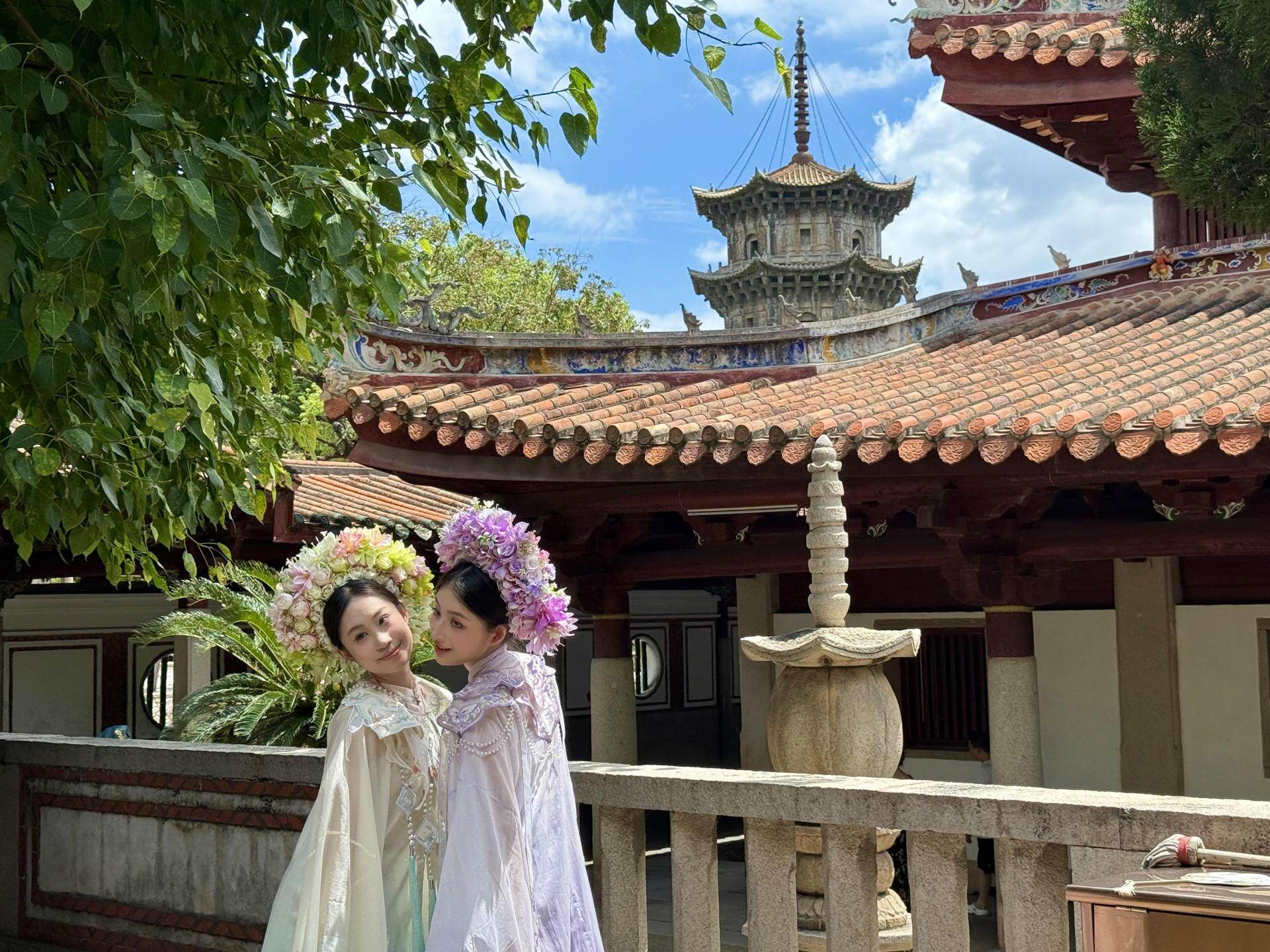By The Korea Times
Copyright scmp

Marco Polo recalled Quanzhou in the 13th century as “the Haven of Zayton, frequented by all the ships of India, which bring thither spicery and all other kinds of costly wares”.
The Venetian explorer portrayed the southeastern Chinese city as the beating heart of the maritime Silk Road, a view echoed by the Moroccan traveller Ibn Battuta, who described it as “one of the greatest ports in the world, if not the greatest”.
Their words conjure images of harbours teeming with vessels from every corner of the globe, vibrant markets and neighbourhoods where every faith and culture was welcome.
Today, Quanzhou continues to enchant visitors with its serene, scenic atmosphere of lush parks, gentle rivers and historic mountain retreats.
The city’s tranquil atmosphere endures in the incense wafting from ancient temples, the bustle of street markets, and centuries-old bridges and historic architecture. Here, the spirit of multicultural China comes alive, sustained by a long tradition of dialogue and diversity.
Once deemed the “Emporium of the World”, Quanzhou is now making headlines as one of China’s hottest domestic travel destinations and a hidden gem for foreign visitors.
The city’s profile has soared since Unesco acknowledged Quanzhou’s role in hundreds of years of global exchange by inscribing 22 World Heritage sites there in 2021.
Quanzhou welcomed nearly 100 million visitors last year, a 20.8 per cent increase compared to 2023. More than 10 million people visited during this year’s Spring Festival, earning the city a spot among China’s top 10 hottest festival destinations, according to Chinese travel platform Mafengwo.
The city’s appeal goes far beyond its postcard-perfect scenery.
Over centuries, it has been shaped by dialogue and diversity, with song-filled ports and bustling market arcades alongside diverse religious worship sites as a testament to its enduring multiculturalism.
Located on China’s southeastern seaboard, Quanzhou’s port has been the terminal of the Maritime Silk Road for more than 1,700 years, reaching its zenith during the Song and Yuan dynasties.
At its peak, Quanzhou anchored a global trade network linking Korea, Japan, Southeast Asia, India, the Arabian Peninsula and Africa. The city welcomed thousands of merchants, sailors and scholars who forged lasting communities.
For millions of overseas Chinese, Quanzhou remains an ancestral home, connecting families from 129 countries, including about half of Taiwan’s population.
Historical records detail how Korean students, monks and merchants settled in Quanzhou in neighbourhoods like the Silla Village and the Goryeo Village. More than 4,500 Quanzhou merchants traded actively with Korea, facilitating the exchange of silk, ceramics, ginseng and shipbuilding know-how.
Foreign merchants and sailors settled in the city by the thousands during the 13th and 14th centuries, leaving behind tombstones, traditions and an enduring cosmopolitan imprint.
A tour through Quanzhou’s religious monuments further illustrates its multicultural heritage.
Founded in 686 during the Tang dynasty, Kaiyuan Temple is the city’s largest and most revered Buddhist temple, with a history spanning more than 1,300 years. Its architecture incorporates elements from successive Chinese dynasties – Tang, Song, Yuan, Ming and Qing – and its twin stone pagodas, among the tallest in China, stand as enduring icons that have weathered centuries of storms.
Remarkably, Kaiyuan Temple also features carvings from a 13th-century South Indian Vishnu temple built by Tamil merchants, including fragments of Hindu deities and architectural motifs contributed by foreign traders. Reliefs depicting elephants, musicians and sphinxes intermingle with traditional Buddhist art, capturing Quanzhou’s centuries-long fusion of influences.
Nearby, the Qingjing Mosque, established in 1009, stands as a lasting symbol of the profound multicultural heritage that defines Quanzhou.
The oldest mosque of its kind in China, it draws its design from the Great Mosque of Damascus in Syria’s capital, featuring stone arches, pointed domes and intricate carvings that blend Islamic and local motifs. Over the centuries, it has served as a spiritual centre for Quanzhou’s Muslim community, composed largely of Arab, Persian and other traders.
Standing just steps away from the mosque is Guanyue Temple, a living testament to the peaceful coexistence of diverse faiths and communities. Originally constructed as Guandi Temple during the Song dynasty and expanded in 1914 to honour the loyalist general Yue Fei, the temple serves as a centre for Taoist and folk worship.
The city’s neighbourhoods, festivals and markets radiate the comfort of peaceful coexistence, where ancient customs and innovation come together.
Quanzhou’s multicultural spirit flourishes in everyday life as well. Local tradition dictates offering tea to every visitor – a gesture of hospitality that extends to business travellers as well as tourists.
Looking ahead, the city aims to grow as an international travel destination.
“To attract more international friends, we are committed to enhancing our bilingual services, including signage, guided tours and payment methods, ensuring a seamless travel experience,” a statement from the Quanzhou Culture, Radio, Television and Tourism Bureau read.
“Simultaneously, we are actively promoting Quanzhou’s unique charm … through international partnership and events.”
For visitors eager to experience Quanzhou’s authentic culture, Hilton Quanzhou Riverside offers a range of immersive services.
Guests are warmly welcomed at the bilingual reception area with innovative activities such as zanhua, a traditional floral hairpin arrangement practised by Xunpu fisherwomen, allowing visitors to participate in centuries-old rituals rooted in the region’s maritime heritage. The hotel’s staff provides English-language help, ensuring seamless communication and a genuinely hospitable stay.
Another highlight for visitors is the exclusive Song Yan banquet, a meticulously revived Song-dynasty-style feast blending historical gastronomy with modern luxury. Guests are invited to savour a multicourse menu inspired by recipes gathered from Quanzhou’s alleys and coastal villages, featuring local seafood, creative regional dishes and performances of traditional opera in the Minnan dialect.
More than a meal, this experience is a journey back in time, allowing guests to not only taste history but feel its pulse through every thoughtfully crafted dish and operatic note, echoing the grandeur of a bygone era.
Read the full story at The Korea Times



